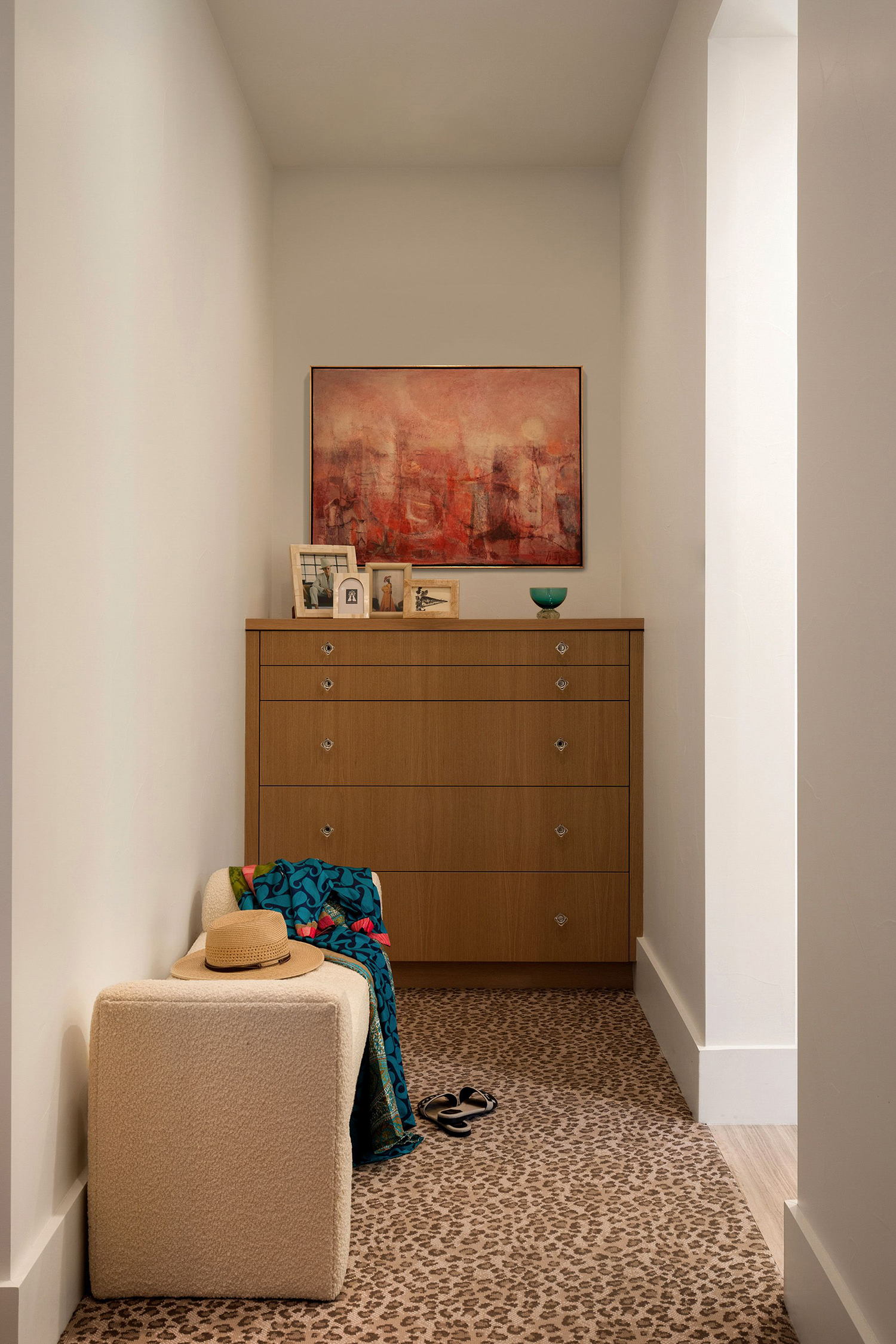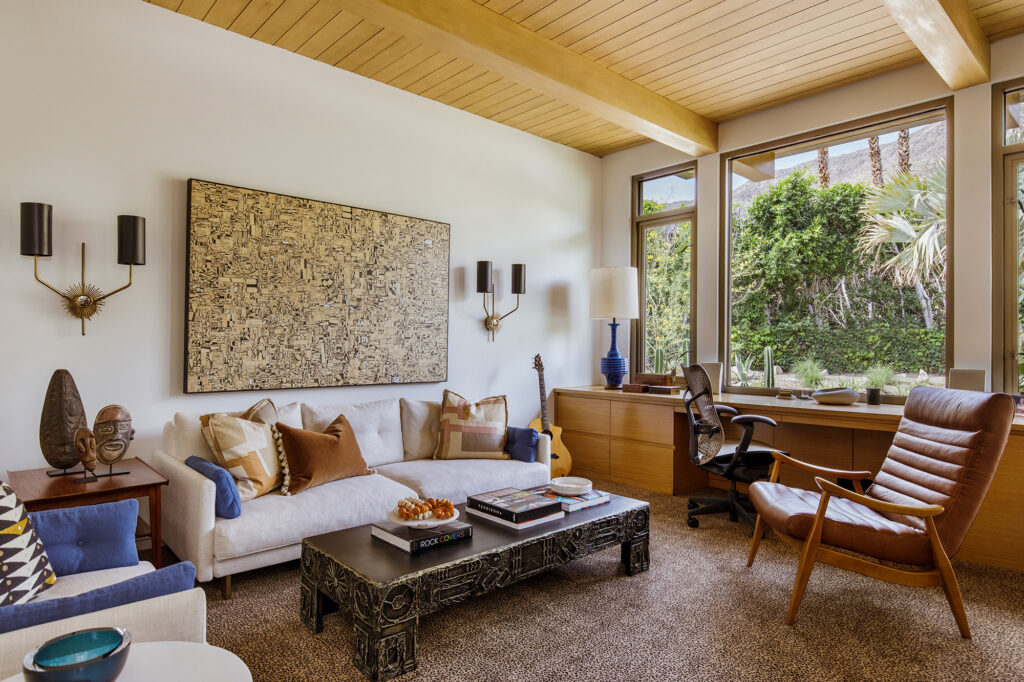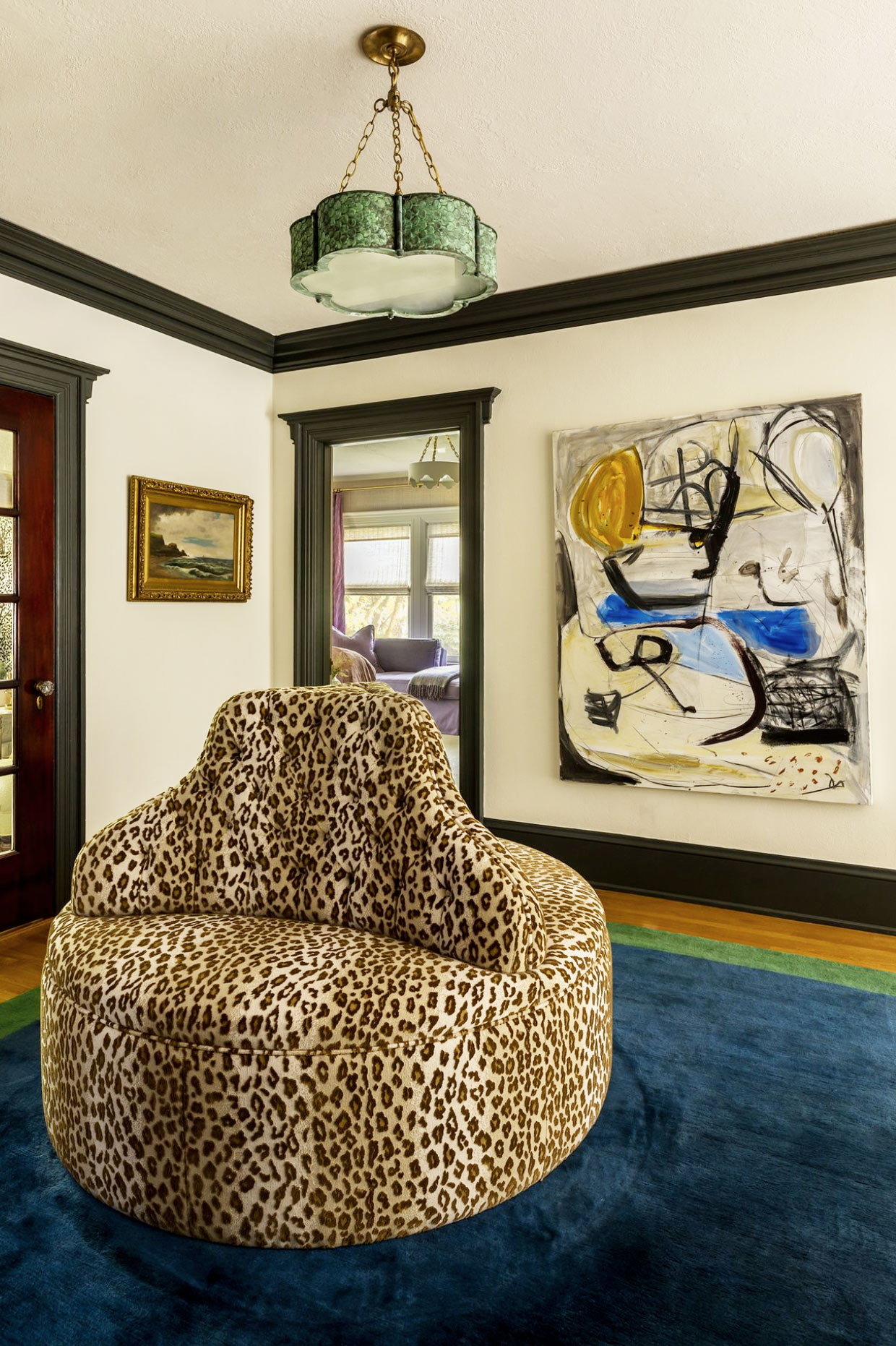
Is There Ever a Stylish Way to Decorate With Leopard? We Asked Designers
Helpful tips to unleash your fashionable, ferocious style.

As far as we’re concerned, a great pattern is the interior design-equivalent to a juicy Maraschino cherry atop an ice cream sundae. While a patterned throw pillow or ottoman seems like a small detail; however, the right print and placement can have the power to create a smile-inducing “wow” moment. Stripes, florals, and plaids might be status quo repeats, but what about leopard? The ferocious repeat has been ruling the fashion runways, but what about our homes? Well, it depends on who you ask.

Design by Joelle Nesen/Maison, Inc.; Photo by David Papazian
According to Rebecca Ward—an interior designer who resides in Sacramento, California—leopard print is “the little black dress of the design world.” “It goes with everything,” she explains. “Leopard is an often overlooked way to bring natural elements into a space.” Joelle Nesen of Maison, Inc. in Portland, Oregon, agrees, noting that leopard can even be treated as a neutral. “Some patterns never go out of style,” Nesen explains. “Leopard print is one of those design elements that remains classic if used in the right way.” Keyword: The right way.
Truth is, leopard isn’t exactly the most forgiving pattern to work with. While a spotted purse or skirt can add a glamorous touch to your ensemble, the stakes feel considerably higher in your home. Trends come and go, but switching up your home decor isn’t as effortless as changing your outfit.

Design by Joelle Nesen/Maison, Inc.; Photo by David Papazian
To toe the line between “classy” and “kitschy,” Seattle-based designer Jessica Dorling recommends punctuating your pad with small touches such as a throw pillow. “It’s a low-commitment way to introduce the leopard trend,” she says. “Unlike wallpaper or large furniture, when you’re ready to move on from leopard, you can easily swap out the throw pillows.”
If you are going to sprinkle some leopard into your decor—be it pillows, blankets, accent furniture, or table linens—consistency is key. “Don’t pair similar scales or colors of leopard print together,” Nesen warns. “They can get feisty.”

Design by Rebecca Ward; Photo by Kat Alves Photography
Leopard print typically comes in a tan and black color palette, but if that combination feels too predictable and overplayed, you can always opt for an alternative scheme. “You can also incorporate the leopard pattern, but don’t take it too literally,” Dorling explains. “I love the leopard print area rug, but the rug’s color can be more neutral, like grays and beiges.” A muted palette, Dorling says, can give the pattern “a grounding element in your space” and stretch the trend’s lifespan.
Maximalist-minded design lovers might want to go for a big leopard-printed wallpaper or a loveseat—which Ward says is fine, provided you use it in moderation. “Limit [the print] to one application in the home, as it is potent,” she says.

Design by Joelle Nesen/Maison, Inc.; Photo by David Papazian
Once you’ve found your fierce footing, feel free to play around with leopard print. “With so many applications through fabrics and wallcoverings, there’s a leopard print for every design style and room, from tone-on-tone for a subtle and sophisticated look to bold, bright colors that add raw, animal energy,” Ward says. Although decorating with leopard might require a learning curve, great design is subjective. Translation: Go with your gut and your room is sure to be the cat’s meow.
